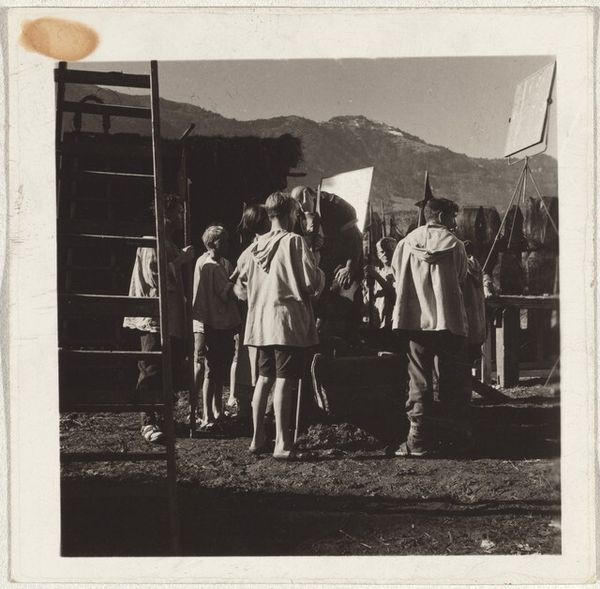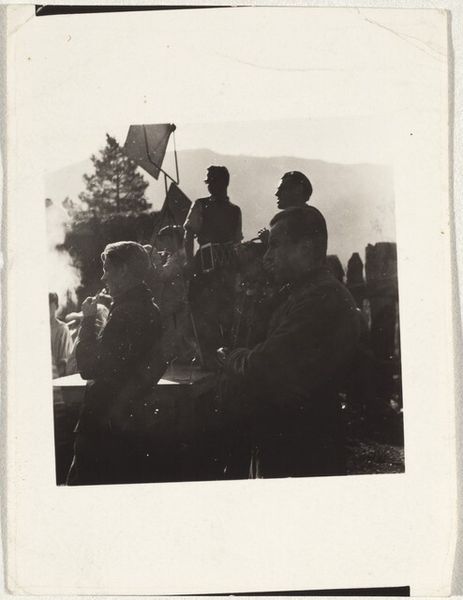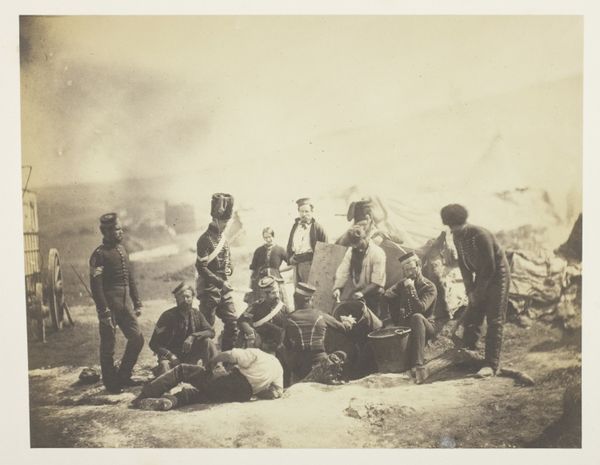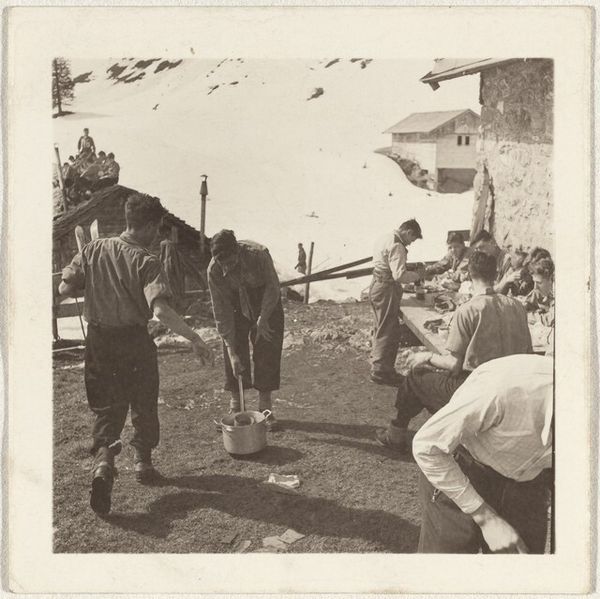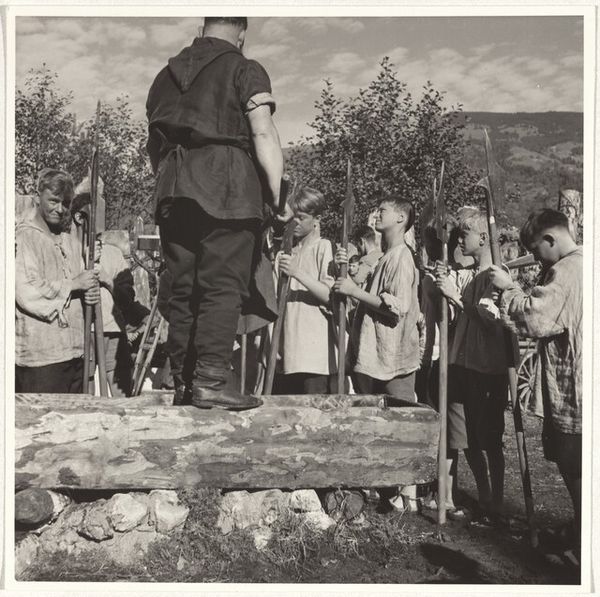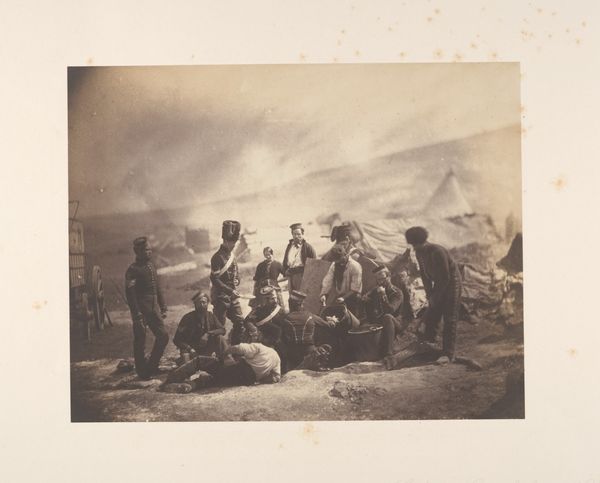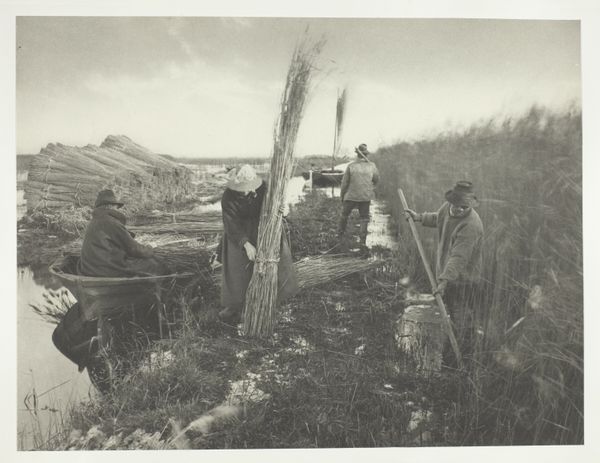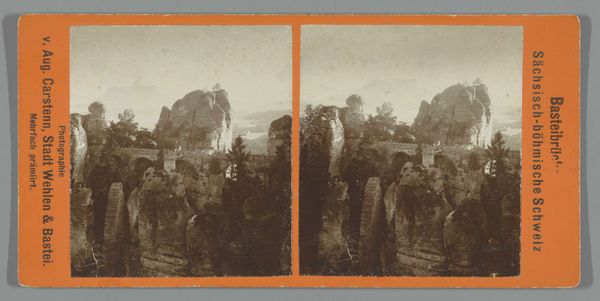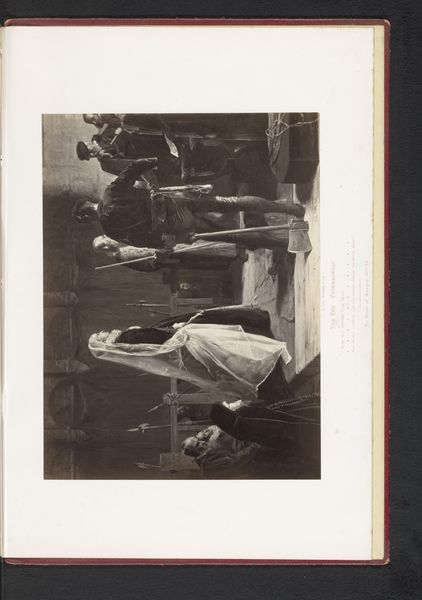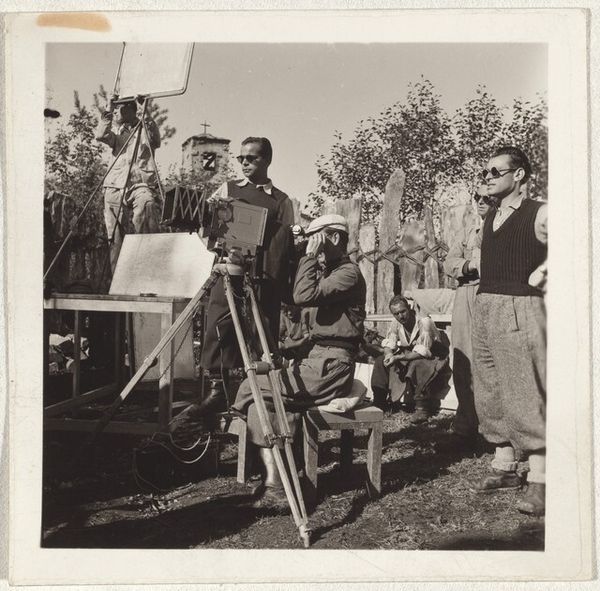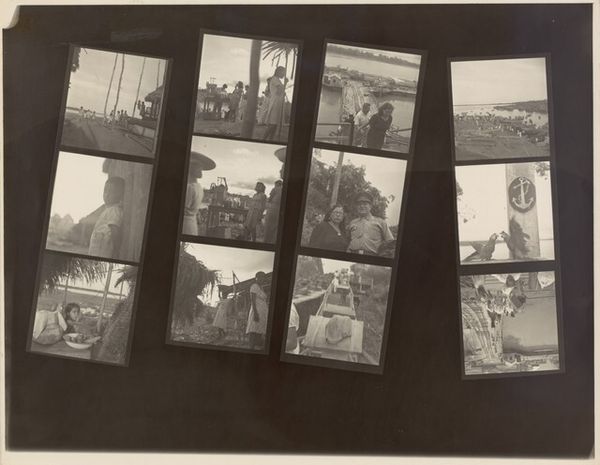
print, photography, gelatin-silver-print
#
print photography
# print
#
landscape
#
photography
#
historical photography
#
gelatin-silver-print
#
genre-painting
#
realism
Dimensions: image: 5.6 x 5.3 cm (2 3/16 x 2 1/16 in.) sheet: 6.4 x 6.5 cm (2 1/2 x 2 9/16 in.)
Copyright: National Gallery of Art: CC0 1.0
Curator: Robert Frank's gelatin-silver print, "Actors pushing cart--Filming \"Landammann Stauffacher\"", created in 1941, offers a glimpse behind the scenes of a film production. What's your initial take on it? Editor: Immediately, I notice a sort of grim determination in the group of figures pushing the cart. There's a stark realism to the scene, a palpable sense of collective effort and perhaps a touch of underlying tension in this monochrome frame. Curator: Precisely. This photograph allows us to reflect on the sociopolitical backdrop of Switzerland during World War II. Consider the climate: this historical film, “Landammann Stauffacher," became a form of "spiritual national defense" projecting Swiss identity and resistance. It becomes a powerful message when viewed in such a time of strife. Editor: Absolutely. The choice to film *that* particular historical subject – the legendary figure of Swiss resistance – couldn't have been accidental. But tell me more, what does it tell us about how these images were consumed at the time, especially knowing how carefully cultural outputs were regulated? Curator: During the era, strict content controls ensured films aligned with the national ideology, reinforcing narratives of independence. In film, historical epics promoted self-determination through heroic accounts of the past, becoming potent vehicles of propaganda amid external pressures. Editor: I also note how Frank's photograph situates itself – literally – behind the narrative that the actual film tried to propagate. Instead of valorizing heroic narratives, it captures the behind-the-scenes effort of people on set. So in a way, it’s resisting or questioning the idealized images shown on film by exposing its laborious process. Curator: That's a great observation. The realism here complicates the narrative of idealized national identity. It pushes us to consider how the act of creation is itself a construction, a curated performance of identity. I wonder if Frank was trying to capture the labor behind the mythmaking? Editor: Possibly. I suppose its strength lies in prompting conversations surrounding what goes into the making of any nation’s narratives, no matter how triumphant or heroic the packaging may be. Curator: It seems both the film, and Frank's photograph invite conversations surrounding how identity is manufactured and communicated.
Comments
No comments
Be the first to comment and join the conversation on the ultimate creative platform.

